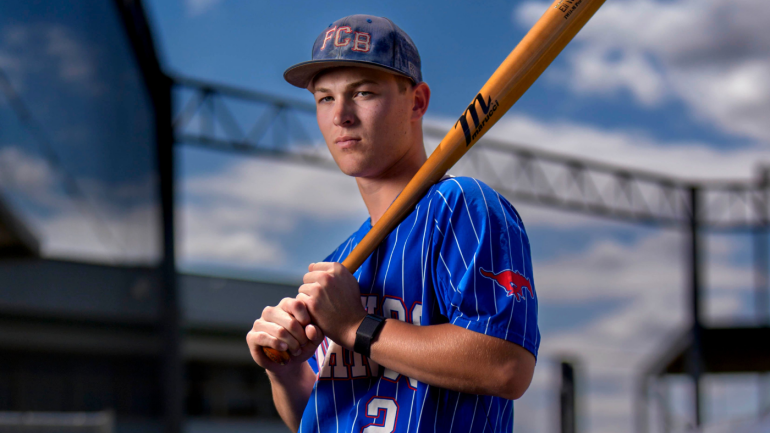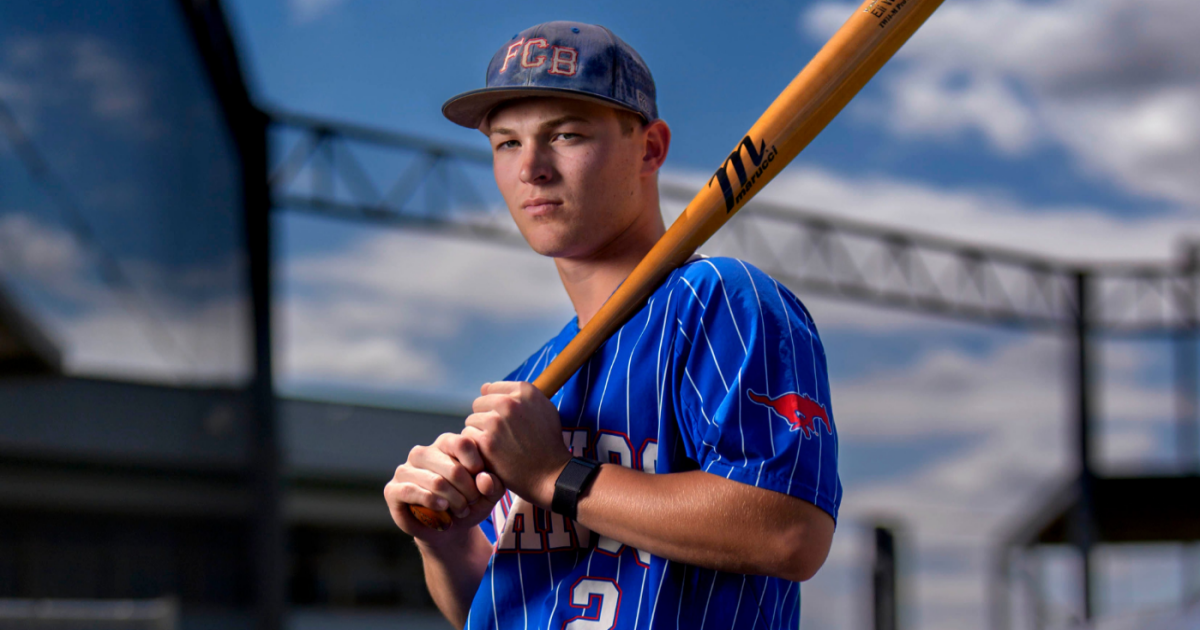
Imagn Images
On Sunday, the Washington Nationals chose Oklahoma prep shortstop Eli Willits with the No. 1 pick in the 2025 MLB Draft. It was the third No. 1 pick in franchise history as Washington previously selected right-hander Stephen Strasburg and outfielder Bryce Harper to kick off the 2009 and 2010 drafts. Although Willits was not even the most popular prepster from Oklahoma — that distinction belonged to Ethan Holliday, who went No. 4 to the Colorado Rockies — I thought highly enough of him to rank him as the draft’s best prospect.
Willits, whose father Reggie played in the majors and now coaches at Oklahoma, offers plenty of apparent upside. He’s a switch-hitting shortstop with a good feel for contact and the strike zone alike. The scouts I spoke to about him believe he has the potential to achieve four above-average or better tools at maturation (everything except the power), making him an easy future starting shortstop.
“Just the high contact rate, the plate discipline, the patient at-bats with the true switch-hit profiles becoming more valuable in this game,” Nationals scouting director Danny Haas said of Willits.
But Willits’ game also contains a hidden, or at least overlooked component that boosted his stock — in my eyes, and in the eyes of evaluators across the league: his birthdate. Indeed, Willits won’t celebrate his 18th birthday until December, making him the youngest No. 1 pick in MLB history:
PlayerTeamDraft yearAge on draft dayEli Willits
2025
17 years, 6 months, 21 days
Tim Foli
1968
17 years, 6 months, 24 days
Ken Griffey Jr.
1989
17 years, 7 months, 9 days
For additional context, consider that Willits is nearly 10 months younger than Holliday — that despite both being high school seniors. Why does any of this seeming trivia matter? Because research has shown that displaying such competency at a young age is a strong indicator of future success. Without getting into a nature versus nurture debate, you can probably credit that dynamic to a few things — like the virtue of having more time to develop and benefit from pro-level instruction and nutrition.
Whatever the exact cause, the effect is probably bigger than most realize. Longtime Baseball Prospectus author Rany Jazayerli wrote the following in October 2011: “The data from 1965 to 1996 suggested that a player drafted #100 overall could be expected to perform as well as a player one year older who was drafted #24 overall. But from 1997 to 2003, the impact of age was so great that the 17-year-old player drafted #100 was as valuable as the 18-year-old player drafted #13 overall.”
Jazayerli’s findings hardly need the support of anecdotal evidence, but there’s plenty of it to be found in past drafts. Both Mike Trout and Francisco Lindor were 17 on their respective draft nights. Carlos Correa was, too, and was the youngest player in his class. A smattering of other names who were picked at 17: Cody Bellinger, Logan Webb, Heliot Ramos, Hunter Greene, and Gunnar Henderson.
Here are the other 17-year-olds selected by teams on Sunday night:
Player
Position
Pick No.
Team
Steele Hall
SS
9
Brady Ebel
3B
32
Angel Cervantes
RHP
50
Taitn Gray
C
86
To be clear: this isn’t a cheat code or a get star quick scheme. Plenty of players who were 17 on draft night do not go on to have All-Star-caliber careers. Teams selecting No. 1 overall shouldn’t just pick the youngest player and be done with it. Still, when a player has displayed the kind of competency that Willits has at such a young age, it’s at least a compelling tiebreaker when choosing among similarly graded players — and, perhaps, a sign that said player has greater upside than might be apparent.
You can understand, then, why the Nationals made the call they did. Willits may not beat Holliday and others in a popularity contest, but he has plenty of advantages where it counts.
